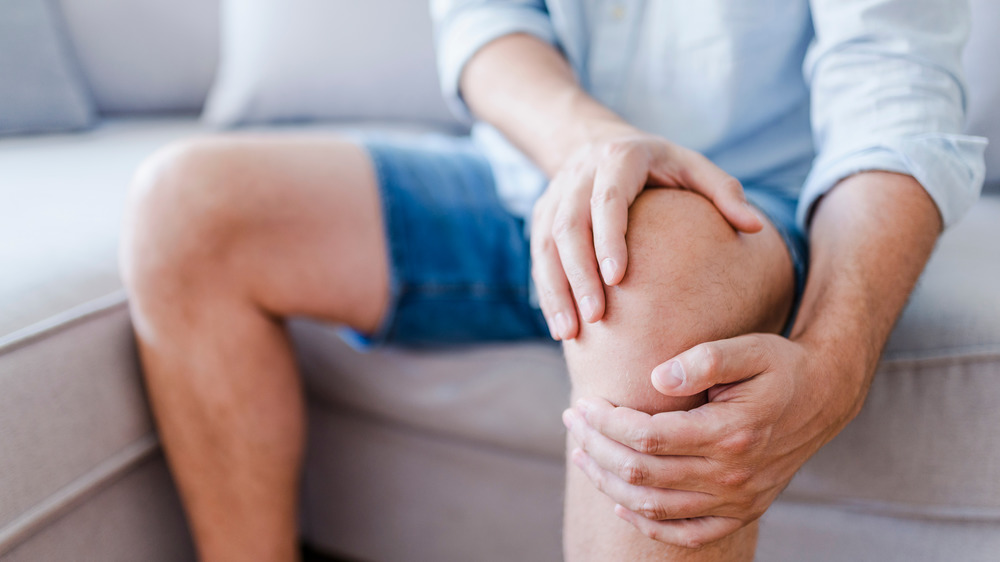What You Need To Do If Squats Hurt Your Knees
Most leg strengthening YouTube videos include a large number of squats. Many strength classes at the gym incorporate them into their repetitions. And it seems like you can't go for a walk in the park without passing someone doing squats on a straight stretch of the path. Yes, squats are everywhere, and even if you've decided they're not for your workout routine, you're likely going to have to do some version of them in your daily life, while cleaning up or retrieving the car keys you dropped. What happens when that burn that you feel in your thighs during squats comes second to the pain in your knees? We can't help you with the natural thigh burn, but here's how to avoid knee pain while doing squats.
If you feel pain in your knees while squatting, then you might be able to easily fix this by correcting your form. According to Men's Health, if you don't have a pre-existing knee injury, and squatting down hurts your knees, then it may be due to your knees doing more work than your hips. Making full use of your hips is essential for having the correct form while squatting, and can also help avoid an injury. One way to do this is swapping regular squats for box squats, which utilize a box about 15 inches high. Men's Health recommends that, with this box squat, your toes should be rotated out 30 degrees and, as you squat, your kneecaps should be in line with your middle toes.
Your ankles could be to blame for painful squats
Further down from the hips, we have the ankles. And it is surprisingly the ankles that could be the reason for your knee pain while doing squats. Dr. Aaron Horschig, a physical therapist, tells Men's Health how having weak ankle stability can be the reason your knees hurt while squatting. To strengthen our ankles (who knew that was so important?) Horschig recommends doing multiple repetitions of a box stretch. Start with placing your flat foot on top of a box or platform and press in a downward forward motion until you can feel a real stretching in the back of your calf.
If it is too late, and you're already suffering from lasting knee pain after squatting, then it is worth trying the R.I.C.E method to aid in recovery. Healthline tells us R.I.C.E stands for rest, ice, compression, and elevation. It is a great way to remember to take a break and ice your knee (or knees) for 20 minutes at a time. Both compression and elevation can help minimize swelling and help drain any extra fluid away from the knee.
If you have previously suffered from a serious injury or just can't seem to make the pain in your knees after squatting go away, then it's worth a visit to your medical provider. They can give an accurate diagnosis and help avoid any potential future damage to your knees. Squats may be everywhere, but at least we can do our best to avoid the knee pain.

